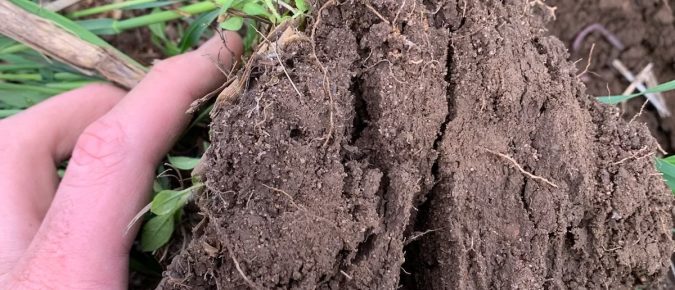Articles
Agricultural carbon credits: A deeper dive into key concepts for farmers and landowners
This article attempts to break down esoteric concepts such as additionality and permanence that are central to how carbon markets operate. It also highlights some important considerations that farmers and landowners need to keep in mind when deciding whether carbon credits are a good choice for their operation.
Agricultural carbon credits: An overview for farmers and landowners
It seems like every week brings another story about carbon credits for farmers. There are many factors to consider before jumping in and enrolling your farm in a carbon program. So what is a carbon credit? A carbon credit is created from a carbon offset, which is an activity that prevents the emission of carbon dioxide or another greenhouse gas to the atmosphere that would otherwise be emitted.
The Cutting Edge Podcast Episode #36: Aronia Berry Markets
An interview with Dale Hilgenkamp and Dr. Dean Duval about current and future markets for aronia berries. Dale Hilgenkamp is an aronia farmer near Omaha, Nebraska and president of the American Aronia Berry Association (formerly the Midwest Aronia Association). Dr. Dean Duval is an aronia farmer in Castana, Iowa as well as a board member […]
The Cutting Edge Podcast Episode #34: Hemp Research Updates
An interview with Dr. Heather Darby and Phillip Alberti on the latest in hemp research. Dr. Heather Darby is an Agronomy Specialist for University of Vermont Extension. Phillip Alberti is a Research Program Manager in the Department of Horticulture at the University of Wisconsin-Madison. Resources University of Vermont Extension Hemp Research Reports Midwestern Hemp Database […]
The Cutting Edge Podcast Episode #35: A Ho-Chunk Perspective on Hemp
Forrest Funmaker of the Ho-Chunk Nation talks about the significant of their partnership with UW-Madison to conduct hemp variety trials at Whirling Thunder Farm near Tomah, Wisconsin. The partnership is made possible by a Sustainable Agriculture and Research Education (SARE) grant. Forrest Funmaker is the Agricultural Researcher and Education Manager of the Ho-Chunk Nation at […]
Field Notes Episode 4: Evaluating Soil Health
Everyone is talking about soil health, so we thought we should too. We chat a bit about what exactly is soil health with Jamie Patton of UW-Madison’s Nutrient and Pest Management program and Brendon Blank, a farmer and Byron Seeds rep from Ixonia, WI, and importantly, how do you measure progress?
Birdsfoot Trefoil can fill a niche in pastures
Legumes can play a significant role in grazing systems by adding nitrogen to the soil and boosting the protein content and palatability of the forage. Birdsfoot Trefoil is a legume that is not as common as many clover species but can play a specialized role in Wisconsin pastures.
Crop budget analyzer with cover crop and tillage comparison
This tool is intended to capture a snapshot of the immediate financial expenses and income that a farm may experience in using practices such as cover cropping and reduced tillage, particularly in grain crop systems.
Growing great pasture and forage in sandy soils, can it be done?
“If you graze it, it will grow.” This variation of the old Field of Dreams adage is often the mantra of grazing influencers. And in many cases, adding livestock to a forage system can induce growth through disturbance and nutrient cycling.
The Cutting Edge Podcast Episode #33: Bambara Groundnut
An interview with Dr. Jed Colquhoun about his research on the Bambara groundnut. The Bambara groundnut is a new crop to the United States but commonly grown in its native Africa as a subsistence crop. Jed shares his successes and challenges during his early work breeding this legume for Wisconsin. Dr. Jed Colquhoun is a […]













